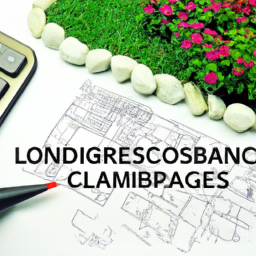Design Improvement Landscaping with Computers
How Has Computerized Design Improved Landscaping
How Has Computerized Design Improved Landscaping?
The introduction of computerized design tools has revolutionized the way we approach landscaping. The digital tools we now have the luxury of utilizing allow us to envision projects that could not have been imagined some decades ago. This article will explore the impact of computerized design tools on the landscaping industry, focusing on 8 to 12 central themes. We will discuss its background, importance, applications, and potential challenges.
What is Computerized Landscape Design?
Computerized landscape design is the use of CAD (computer-aided design) program packages to create two-dimensional (2D) or three-dimensional (3D) representations of a property. It is used to design landscapes, yards, and various outdoor features such as swimming pools, decks, fences, pergolas, and walkways. CAD is made up of a graphic user interface (GUI) and drafting tools to allow the user to draw information for the design. This provides a more user-friendly experience when designing and developing ideas, plans, and detailed drawings.
Benefits of Computerized Landscape Design
CAD offers several benefits for landscape design projects. First, it allows for greater accuracy in drawings. This means that every element of the design is captured in precise detail and avoids potential problems that could occur during construction or execution. Secondly, CAD allows for visual representations of even the most intricate projects. The advanced 3D options can give the user a realistic simulation of the finished project. Thirdly, with faster execution, CAD allows designers to take on more projects and focus more on perfecting their designs instead of honing their drawing skills.
Applications of Computerized Design
CAD is being used in almost all areas of the landscaping space. It can be used for backyard designs, creating decks, and planting plans. It can also be used to create lighting installations, irrigation systems, and even outdoor living spaces. Another application is virtual landscaping, which allows homeowners to virtually design and view their landscapes before beginning construction.
Potential Challenges of Computerized Design
The use of computerized design tools can present some potential challenges. One of the primary challenges is the potential for inaccurate information. For example, improper use may allow for false or misleading plans. Additionally, as with any technology, the equipment and software can break down or malfunction, which can impact deadlines.
Final Word
Computerized design has revolutionized the landscaping industry. Not only can it generate more accurate and detailed drawings of projects, it also allows for virtual simulators that can give homeowners a visual representation of their projects. Further, it aids in design tasks such as selecting plant material and evaluating topographical features. Despite potential challenges, CAD is here to stay, and is only going to advance further in the future.
Takeaways
Computerized design has become an integral part of the landscaping industry. It can be used to generate detailed and accurate plans, easy-to-use 3D simulators, and select plant material. Despite potential challenges like inaccurate information and breakdowns, CAD will remain an essential part of the industry and will only continue to progress in the years to come.
References:
Goll, B. (2021, February 16). Benefits of Computer Aided Design for Landscape Design. Retrieved April 15, 2021, from https://www.landscape-design-advisor.com/CAD-for-landscape-design.html
McAlear, T. (2021, March 8). How to Use Computer Aided Drawing for Landscape Design. Retrieved April 15, 2021, from https://www.landscapingnetwork.com/computer-aided-drawing-for-landscape-design/

Previous Page
